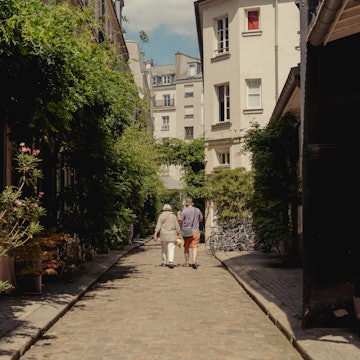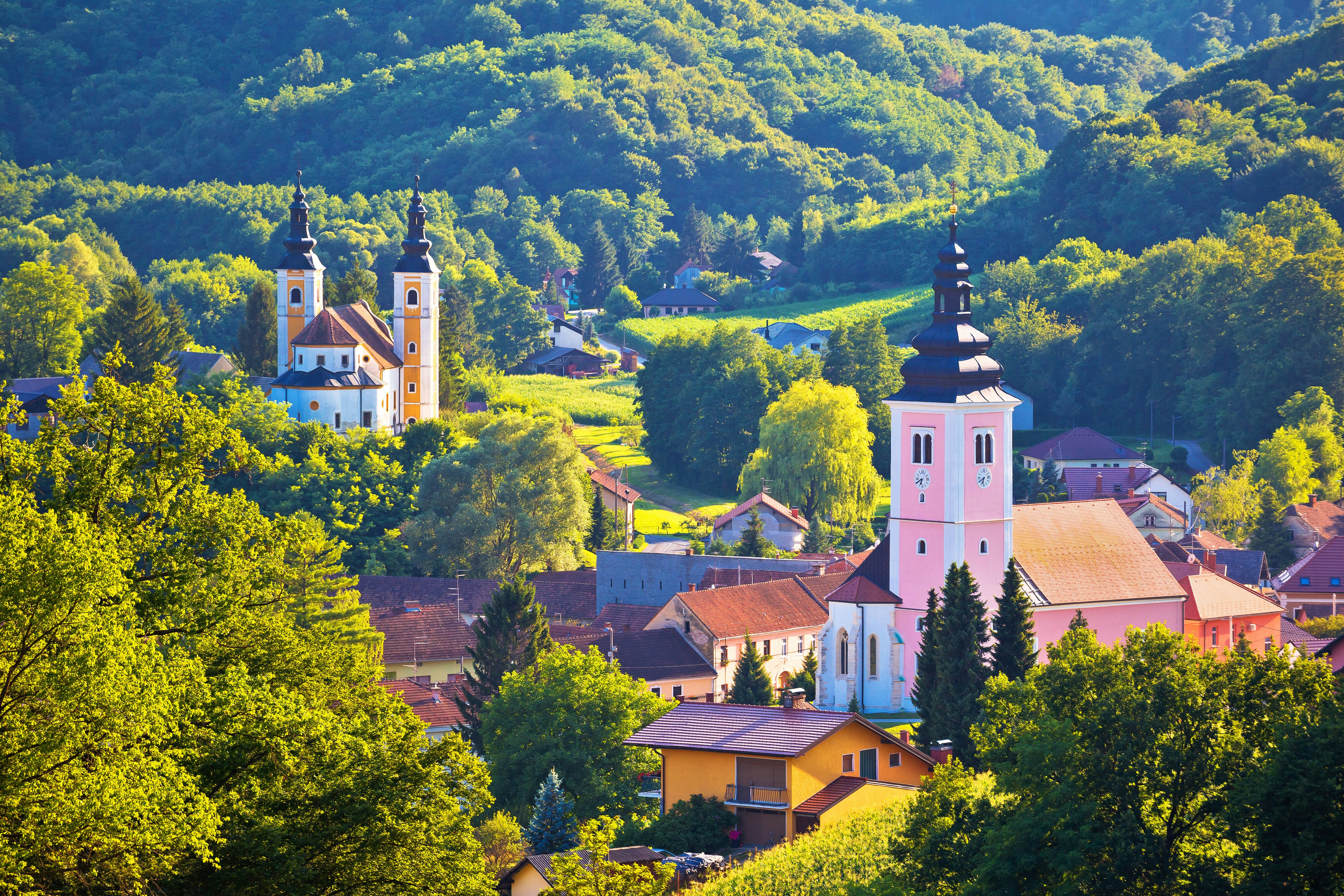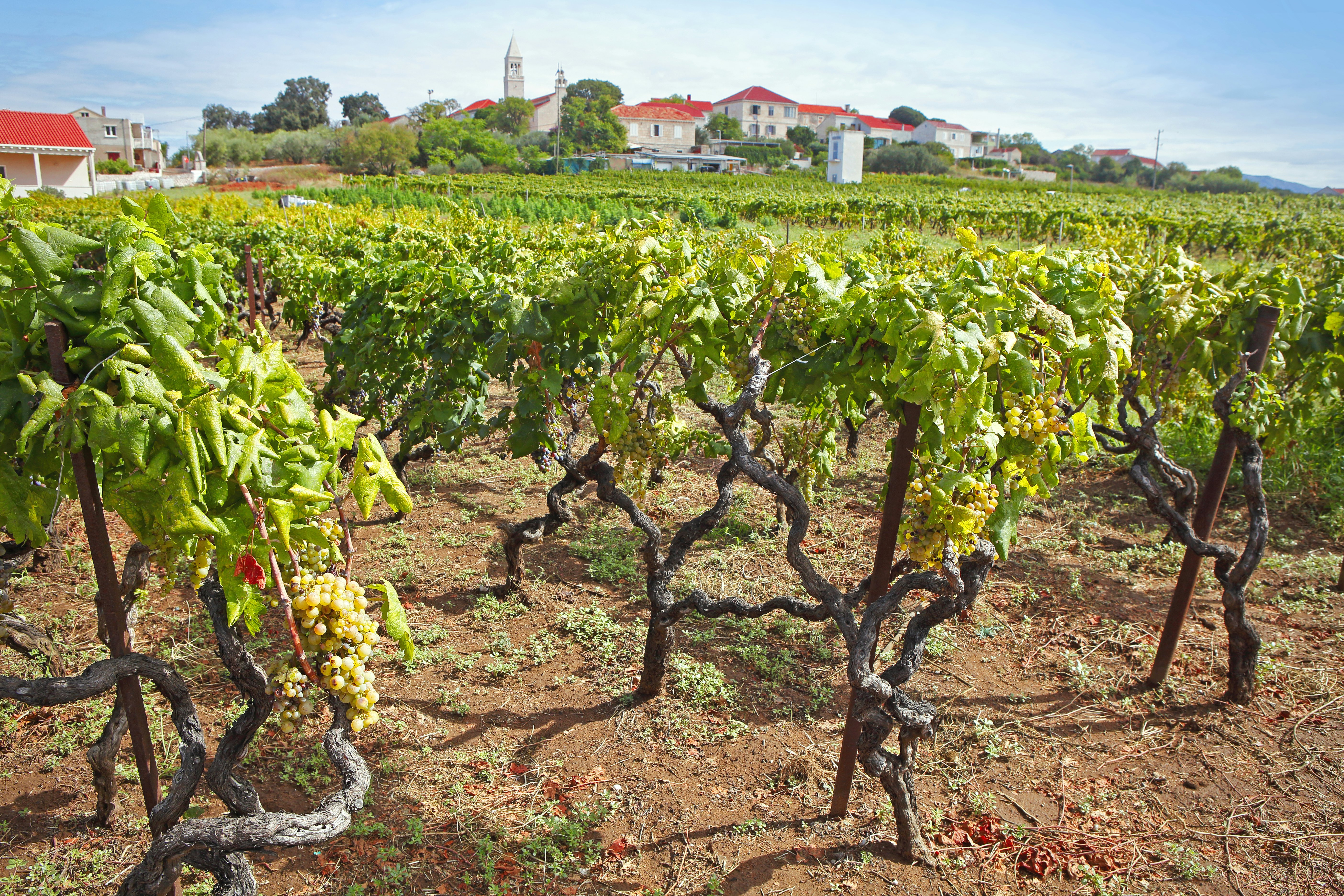

The Međimurje region. xbrchx/Shutterstock
Croatia’s dazzling coast, storied islands and history-rich cities have become international icons. Popularity, however, comes with crowds, especially during the height of summer. Instead of jostling for space at Dubrovnik’s ramparts, Plitvice’s waterfalls or Hvar’s beaches and bars, consider an alternative way to connect with the country’s soul by venturing inland, seeking out lesser-known routes or visiting out of season. You’ll find baroque towns pulsating with festivals, wild wetlands thrumming with birds, secret hikes from mountain villages and vine-draped hills full of harvest feasts.
These eight destinations across Croatia trade queues for quiet, local flavor, pristine scenery and space to savor the moment – all without the crowds.


1. Instead of Dubrovnik, try Varaždin
Best for a baroque center and quirky festivals
Dubrovnik’s medieval walls and Adriatic views remain unmatched, but overwhelming crowds – especially during cruise season – can detract from the experience. Varaždin, nestled about an hour north of Zagreb, presents a contrasting baroque jewel. Candy-colored palaces and facades, cobblestone streets and a shining fortress delight visitors. Coffeehouses in the historic center hum with activity, while artisans keep centuries-old crafts alive.
Špancirfest, Varaždin’s beloved street festival held every year in late August, turns the city into an open-air theater of music, drama, crafts and heaps of fun. The autumn months paint the town and surrounding vineyards in gold and crimson, while Varaždin Baroque Evenings Festival brings classical music to the cathedral, churches and theaters around town over two weeks each September.
Planning tip: Visit during Špancirfest for lively street life, or opt for October and early November for fall colors and smaller crowds. To soak in thermal baths, head to the spa town of Varaždinske Toplice, a 30-minute drive away. Sample varaždinski klipič, the town’s traditional sticklike bread – a specialty of the local bakeries since the 18th century.

2. Instead of Plitvice Lakes, try Kopački rit Nature Park
Best for forests, bird-watching and wetlands
Plitvice’s cascading lakes and waterfalls stand out among Croatia’s top activities, but the crowds often mean long waits and busy boardwalks. For a different experience, Kopački rit, located near the city of Osijek in the little-visited Baranja region in the east of Croatia, is one Europe's largest protected wetlands, with a peaceful maze of marshes, rivers and lakes.
Home to a remarkable diversity of birds and wildlife, Kopački Rit’s waterways are full of white-tailed eagles, herons and cormorants, and you might see semiwild horses in the meadows. You can take a flat-bottomed boat through lotus-filled backwaters to spot wildlife – there are over 250 bird species here. Restaurants in nearby villages like Kopačevo serve hearty dishes, such as fiš paprikas, a spicy carp stew.
Planning tip: Spring and early fall offer the best conditions for wildlife and bird-watching; bring plenty of mosquito repellent. You can take one of the scheduled boat tours, or book a smaller boat tour to navigate the narrower waterways. Have a meal at Čingi Lingi čarda, an airy barnlike restaurant by a lake that's a 10-minute drive from the park.

3. Instead of Istria’s hill-strewn landscapes, try Međimurje
Best for cycling, spa retreats and wine
While Istria’s coastline and hill towns like Motovun fill up fast in the summer and fall months, Međimurje – the northernmost Croatian region bordering Hungary and Slovenia – remains a tranquil expanse of gentle hills, vineyards, orchards and renowned thermal spas. Quiet roads invite cyclists to wind through bucolic landscapes dotted with picturesque apple trees and wine cellars (Lovrec's stands out).
Međimurje’s spa town of Sveti Martin features top-tier wellness facilities at Terme Sveti Martin, with indoor and outdoor pools fed by naturally warm underground springs. After a day exploring on two wheels or strolling through vineyards, soak in healing waters, followed by traditional cuisine featuring pumpkin seed oil, local cheeses and međimurska gibanica, a sumptuous layered cake. Check out the floating river mill on the Mura, dating to 1902; take a ride on a river barge; and stroll the interpretative nature trail.
Planning tip: November is a great time to visit for St Martin’s feast and the harvest wine festivals. In mid-May, the Urbanovo wine festival in Štrigova celebrates pušipel, a light local white wine.

4. Instead of Split, try Rijeka
Best for alternative culture, street life and Carnival
Split dazzles first-time visitors with its ancient Roman palace and bustling riva (seaside promenade), but Rijeka, a port city in Kvarner to the north, offers a refreshingly different urban experience, one infused with forward-thinking energy. Its Habsburg architecture and industrial docklands create a compelling cityscape that’s less polished and more down-to-earth, with quirky cafes, thriving restaurants and a buzzing indie music scene.
Stroll the Korzo promenade lined with bars, cafes and boutiques; ascend to the hilltop Trsat Castle for panoramic views over the Kvarner bay; and take a seaside stroll along the Molo Longo pier. Throughout the year, Rijeka puts on a variety of avant-garde art exhibits in former industrial spaces, making it a hub for creatives and alternative culture. The rock scene is happening too; check out what’s on at Book Caffe Dnevni Boravak, Klub Palach and Pogon Kulture.
Planning tip: Time your visit around Rijeka’s Carnival events (in January and February); also known as Rijeka’s Fifth Season, Carnival here is one of Europe’s largest and most vibrant celebrations.

5. Instead of Hvar Island, try Korčula
Best for a laid-back island with medieval charm and wineries
Hvar is no doubt a stunner that deserves a visit, but for those seeking an alternative, Korčula in the south awaits as its quieter, more refined Dalmatian cousin. The storybook medieval town sometimes called Little Dubrovnik invites roaming through its narrow cobblestone lanes lined with historic stone houses and fortress walls, a legacy of its time as part of the Venetian empire.
The island of Korčula is renowned for its native white wine varieties, especially grk and pošip, which you can sip at family-owned wineries with sweeping sea views; Popić Winery is a great family-run cellar in Lumbarda, with a tradition that spans 300 years. The island’s calm coves, less traveled trails, sweet villages and easy boat connections to surrounding islets such as Proizd make Korčula a favorite for slow travel lovers. There is a stellar food scene too; Konoba Mate in the inland village of Pupnat is one of the island’s best.
Planning tip: In the summer, be sure to see the moreška sword dances, a tradition from the 15th century. For good weather and fewer crowds, visit in May, June or September. If you’re interested in local traditions, come during Holy Week to see the processions.

6. Instead of Brač in Dalmatia, try Cres Island in Kvarner
Best for rugged beaches and tranquil villages
While the Zlatni Rat beach on Brač steals the show for its V-shaped strip of white pebbles, those seeking a quieter escape should consider Cres Island, further north in the Kvarner Gulf. Still wild and relatively undiscovered, Cres presents rugged landscapes with dense forests, cliff-fringed coves and fishing hamlets. The beach below the gorgeous medieval village of Lubenice is remote but stunning; a steep trek down or an easy taxi boat ride brings you there.
Cres, Croatia’s second largest island, is a perfect playground for hikers and nature seekers – amazing for slowly exploring its thick old-growth forests, dazzling cliffsides and olive groves. The hilltop village of Beli has a nature sanctuary, the Beli Visitor Centre and Rescue Centre for Griffon Vultures, caring for the last 100 families of these birds of prey left in Croatia; you can visit the former school building and learn about this rare and endangered species.
Planning tip: Cres is connected to the mainland by car ferry via two routes (both on Jadrolinija): the shorter Brestova to Porozina ferry from Istria or the Valbiska to Merag ferry from Krk Island. A car is great to have, so you can get around all the less-trodden areas of the island.

7. Instead of Krka National Park, try Risnjak in woodsy Gorski Kotar
Best for mountain air, woodland walks and lake picnics
Krka’s waterfalls are beautiful and its forests great for fresh air, but the park can feel overrun on summer days. Gorski Kotar, known as Croatia’s Green Heart, is a mountainous inland region offering pine-scented air, crystal-clear lakes and pristine forests. You can enjoy lakeside and riverside strolls; cave explorations at Lokvarka and Vrelo; foraging for mushrooms and chestnuts (or the finished forest-to-plate cuisine); and cozy stays in mountain lodges and A-frame chalets.
Gorski Kotar’s rich wildlife includes lynx and bears, making it a nature lover’s paradise away from the coast’s hustle. Check out Risnjak National Park and its Leska trail through beech, pine and fir forests; or the enchanting Golubinjak forest park, its forests rising up above tall white cliffs. Explore the artificial Lokvarsko lake for hikes, bicycle rides and water sports and the Kamačnik canyon, with a woodsy circular trail along a stream.
Planning tip: Visit the towns of Fužine or Delnice in September and October for mushroom festivals and peaceful hiking with fiery fall foliage. For a special experience, join a guided hike with Lynx and Fox, which leads fun trips to secret nature spots and shares lots of local stories.

8. Instead of Zagreb’s urban vibes, try the bucolic delights of Zagorje
Best for Neanderthal sites, village museums and storybook castles
Once you’ve had your fill of Zagreb’s urban offerings, turn to rural joys in Croatia’s region of Zagorje, just an hour’s drive north. A land of rolling green hills, fairytale castles and ancient folk traditions, it features the excellent Staro Selo (Old Village) Museum, an open-air recreation of a 19th-century village in the tiny town of Kumrovec, with restored barns and cottages featuring the traditional crafts and former way of life. The brilliant Museum of Krapina Neanderthals, on the site of the largest Neanderthal fossil haul found in Europe, narrates the story of humanity in a series of interactive, high-tech multimedia displays.
In Zagorje, vineyards filled with family-run wineries dot the countryside (check out Bolfan Vinski Vrh); down-home taverns dish out comfort food like štrukli (a cheese-filled dumpling) and roasted meats (Grešna Gorica is a great choice); thermal spas like Terme Tuhelj beckon for relaxing soaks; and fortified castles like Veliki Tabor invite visitors to look around their medieval hallways.
Planning tip: It’s best to have your own wheels to get around Zagorje, though mind the curvy, potholed roads. Early autumn (September through October) is the best time to visit, with harvest festivals, folk events and mild weather perfect for outdoor activities and spa stays.
















